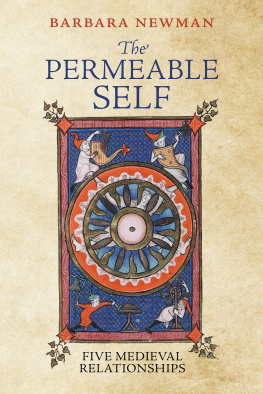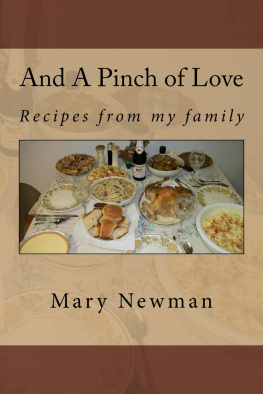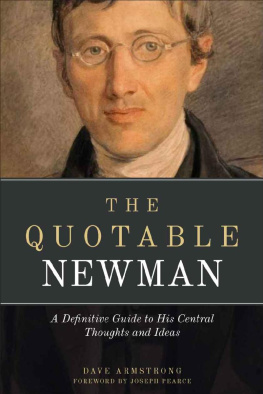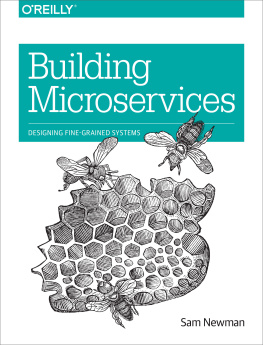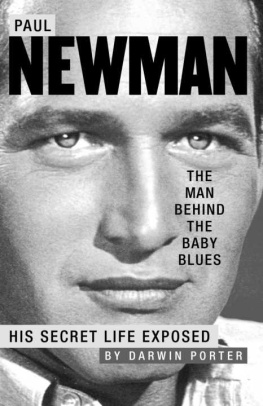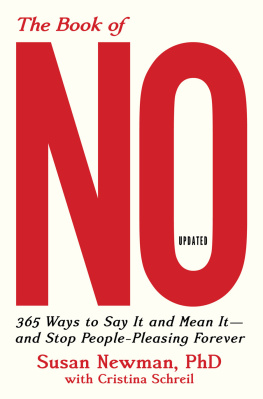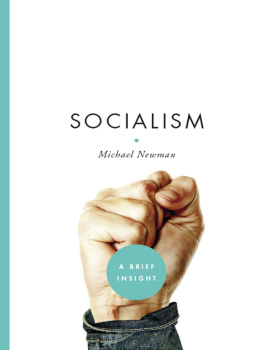Newman Barbara - The Permeable Self
Here you can read online Newman Barbara - The Permeable Self full text of the book (entire story) in english for free. Download pdf and epub, get meaning, cover and reviews about this ebook. year: 2021, publisher: University of Pennsylvania Press, genre: Religion. Description of the work, (preface) as well as reviews are available. Best literature library LitArk.com created for fans of good reading and offers a wide selection of genres:
Romance novel
Science fiction
Adventure
Detective
Science
History
Home and family
Prose
Art
Politics
Computer
Non-fiction
Religion
Business
Children
Humor
Choose a favorite category and find really read worthwhile books. Enjoy immersion in the world of imagination, feel the emotions of the characters or learn something new for yourself, make an fascinating discovery.
- Book:The Permeable Self
- Author:
- Publisher:University of Pennsylvania Press
- Genre:
- Year:2021
- Rating:5 / 5
- Favourites:Add to favourites
- Your mark:
- 100
- 1
- 2
- 3
- 4
- 5
The Permeable Self: summary, description and annotation
We offer to read an annotation, description, summary or preface (depends on what the author of the book "The Permeable Self" wrote himself). If you haven't found the necessary information about the book — write in the comments, we will try to find it.
The Permeable Self — read online for free the complete book (whole text) full work
Below is the text of the book, divided by pages. System saving the place of the last page read, allows you to conveniently read the book "The Permeable Self" online for free, without having to search again every time where you left off. Put a bookmark, and you can go to the page where you finished reading at any time.
Font size:
Interval:
Bookmark:

THE MIDDLE AGES SERIES
Ruth Mazo Karras, Series Editor
Edward Peters, Founding Editor
A complete list of books in the series
is available from the publisher.

Barbara Newman

Copyright 2021 University of Pennsylvania Press
All rights reserved. Except for brief quotations used for purposes of review or scholarly citation, none of this book may be reproduced in any form by any means without written permission from the publisher.
Published by
University of Pennsylvania Press
Philadelphia, Pennsylvania 19104-4112
www.upenn.edu/pennpress
Printed in the United States of America on acid-free paper
10 9 8 7 6 5 4 3 2 1
A catalogue record for this book is available from the
Library of Congress.
ISBN 978-0-8122-5334-4
Totus tecum sum, et ut verius dicam, totus in te sum.
Peter Abelard (?), Epistolae duorum amantium, no. 16

ILLUSTRATIONS


Members of One Another
We are members of one another.
St. Paul (Romans 12:5)
What does it mean to be a person, a human self? In everyday speech, we use the term more or less synonymously with individual to mean any human being. But in legal and philosophical debates, the problematic nature of personhood quickly emerges. Should it be assigned on the basis of such criteria as selfawareness, agency, rationality, and the ability to care for oneself? Then unborn babies would be excluded, but so would newborns and those suffering from severe psychosis, mental retardation, or late-stage dementia. Conversely, many nonhuman animals would be included. In American law, corporations and labor unions are treated as persons, yet dolphins and chimpanzees are not. Should a robot with advanced artificial intelligence count as a person? No one knows, but Steven Spielberg poignantly raised the question in his 2001 film A.I.
While this book does not directly address such contemporary issues, I hope it will shed an oblique light on them. It approaches the meaning of personhood historically by way of some fascinating liminal phenomena in medieval poetry, hagiography, and other discourses. These phenomena concern not individuals in their solitude but interpersonal relations at a certain pitch of intensity, where the boundaries between persons seem to blur. Some of them are little known, others familiar but little studied. All raise tantalizing questions about the nature of persons in relationship. Why, for example, did the myth of the separable heart take such a firm hold in romance literature, from lovers who exchange hearts on parting to mystics who exchange hearts with Jesus? Why did Augustine represent his pedagogical ideal as a mutual indwelling of teacher and student? What special traits gave both saints and demoniacs their ability to read minds? Why were mothers who died in childbirth buried in unconsecrated ground? All these phenomena, diverse as they are, exemplify a kind of selfhood more permeable than we are used to imagining.
In A Secular Age, Charles Taylor observes that the premodern self was more porous than the bounded or buffered self that has replaced it. In modernity, he writes, the only locus of thoughts, feelings, spiritual lan is what we call minds; the only minds in the cosmos are those of humans ; and minds are bounded, so that these thoughts, feelings, etc., are situated within them. But in the world of spirits, demons, [and] moral forces which our predecessors acknowledged, it was not so.
This book is about that interspace. It does look at demons and spirits, that is, at the relations of human beings with supernatural ones, seen from the standpoint of enhanced or threatened personhood. But its primary focus is on human relations themselves, for the porous selfhood that Taylor describes also shaped the ways people perceived and related to one another. My project is to discover exactly what that unfamiliar kind of personhood meant for medieval Europeans, not just as a contrast or prequel to modernity, but as a way of being in the world. If Taylor is right, as I believe he is, how did their greater permeabilitya freer openness to spiritual and communal influences, a less bounded psyche, even a lack of what we now call healthy ego boundariesaffect the kinds of relationships people formed, and the ways they experienced and behaved in them? What advantages, and what problems, did such a porous selfhood entail? To answer such questions, The Permeable Self examines five peculiarly intimate medieval relationships: those between teacher and student, saint and sinner, lovers, mother and child, and God and the devil. The angle from which I approach these relationships, as well as the meaning of personhood itself, is coinherence, a theological idea that I will unpack in the rest of this Introduction. Persona itself, as a medieval concept, also requires some explanation.
The person is not the only or even the most obvious concept to use in exploring human selfhood. Recent historians have more often addressed the self with reference to either the individual (vis--vis the collective) or the subject (vis-vis institutional power). As psychological concepts, both are decidedly modern. Individual in the sense of a distinct personality emerged only in the nineteenth century, long after its older sense had become obsolete.
As Timothy Reiss observes, individual and subject are ideologically charged terms, both so thoroughly bound up with post-Enlightenment concepts as to be of limited use in exploring the premodern self.
Boethius, a sixth-century heir to those debates, bequeathed a famous definition to the Middle Ages: persona vero rationabilis naturae individua substantia. Like all divine predicates, personhood-as-relation cannot be predicated univocally of God and creatures, but neither is it equivocal. Rather, the idea must be construed analogically. However the analogy may work (and Thomas does not spell it out), a person can only be understood as, or at least in, relation to other persons.
Once the essential dogmas concerning Christ and the Trinity were in place, both could be extended to define human selfhood. Christian anthropology is founded on the doctrine of imago Dei, the human person created in the image of God. While the image is most often defined as rationality or free will, it also has some less familiar implications. For example, the divine Self was conceived as supremely permeable. The three persons of the Trinity not only share the same nature; they are also said to indwell one another reciprocally. This is the doctrine known in English as coinherence, or being-within-one-another. The technical terms are the Greek perichoresis, giving way to each other or circling round one another, and its Latin equivalent,
Font size:
Interval:
Bookmark:
Similar books «The Permeable Self»
Look at similar books to The Permeable Self. We have selected literature similar in name and meaning in the hope of providing readers with more options to find new, interesting, not yet read works.
Discussion, reviews of the book The Permeable Self and just readers' own opinions. Leave your comments, write what you think about the work, its meaning or the main characters. Specify what exactly you liked and what you didn't like, and why you think so.

